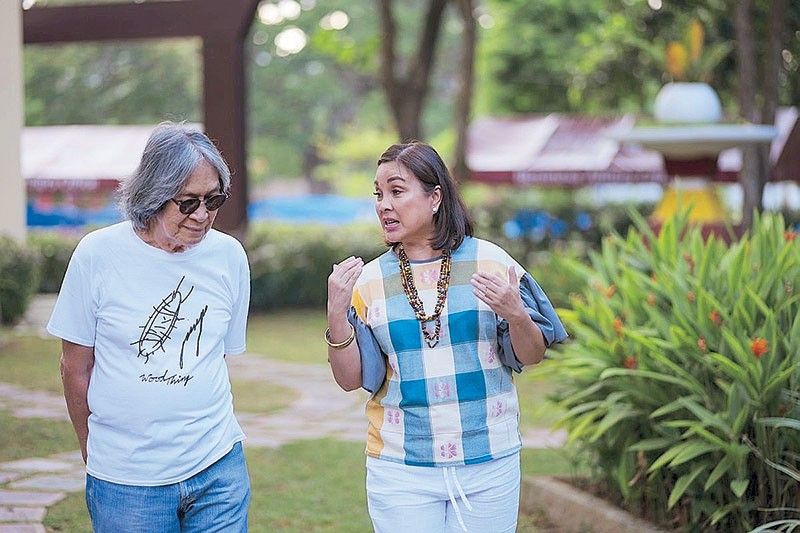Senator Loren Legarda: ‘Junyee proves how art can spark change, inspire action’

MANILA, Philippines — Years ago, when we visited Senator Loren Legarda’s office in the old Senate, we saw many pieces by Junyee. The senator explained how she and the artist share the advocacy of preserving and protecting culture. “And I don’t think there is another Senator with artworks attached to their doors (laughs),” she said during a tour of her office. “And even my outfits reflect my advocacy.”
We talked to her recently about her friendship and support of Junyee.
PHILIPPINE STAR: What initially drew you to the works of Junyee, and how has his art influenced your perspective on contemporary Filipino art?
SENATOR LOREN LEGARDA: Junyee and I have shared views and appreciation of nature, art and culture. What I find particularly compelling is how his works invite the audience to delve deeper into their meanings, making you reflect on the broader relationship of art, humanity and the environment. His commitment to sustainability and his use of indigenous materials resonate deeply with my advocacies for environmental conservation and cultural preservation.
He made me appreciate how influential art can be as a mechanism for social commentary and environmental awareness. He reinforced my belief that contemporary Filipino art is not confined to what is tangible or visible but extends to the intangible connections and dialogue it creates between the artist and its audience — even touching pressing issues of our time.
Could you share some details about how you have supported Junyee’s artistic endeavors over the years? Have there been any collaborative projects that stand out to you?
Over the years, I’ve had the privilege of supporting Junyee’s artistic endeavors in several meaningful ways. One of the most significant projects we collaborated on was the installation of the “Bantayog ng Wika” monuments in partnership with the Komisyon sa Wikang Filipino (KWF). The marker is a bamboo-inspired sculpture made of stainless steel and bearing the baybayin version of “Pag-ibig sa Tinubuang Lupa” by Andres Bonifacio. These symbolic language markers were installed across various provinces, including Antique, Ifugao, Kalinga, Batanes, Pangasinan, South Cotabato, and Tawi-Tawi. This initiative was a vital part of our shared effort to preserve our country’s intangible cultural heritage and ensure that our linguistic diversity, especially the endangered and dying languages of our ethno-linguistic groups, are recognized, preserved, and celebrated.
Most recently, we reached another milestone in our journey to promote art, culture, and ecological responsibility with the launch of the very first sculpture garden in the Philippines, located in the beautiful natural surroundings of the University of the Philippines Los Baños (UPLB) in Laguna. The sculpture garden is a sanctuary of Junyee’s six decades of artistic expression, featuring installations that hold deep social relevance, including “Balag” and “Angud”; the “Bantayog ng Wika”; the “Bagong Binhi,” originally created in 1986 made of twigs and leaves; the “Ugnayan” that he created for APEC in 2015; the “Balanghay,” which reflects both the past and the present, and of course, “Makiling,” to whom the entire garden is dedicated to.
The collaborations that Junyee and I have shared reminded me of how art can communicate without the need for words and how it can provoke thoughts that would spark change and inspire action.
How do you think Junyee’s unique approach to art aligns with your cultural and environmental advocacies?
Junyee’s art aligns with my advocacy for sustainable practices and environmental preservation. His work, like the “Angud,” is a strong statement of fighting against exploiting Earth’s resources. Through his works, Junyee challenges us to rethink our relationship with the environment, inviting us to adopt practices that conserve and protect the planet.
We all have the opportunity to make a difference for our country. For Junyee, it is through addressing pressing societal issues with his art; for me, it is through legislation, programs, and community actions. Junyee and I share a common goal: to build a non-discriminating, culturally rich, and progressive society where there is respect for both the environment and our cultural heritage.



















